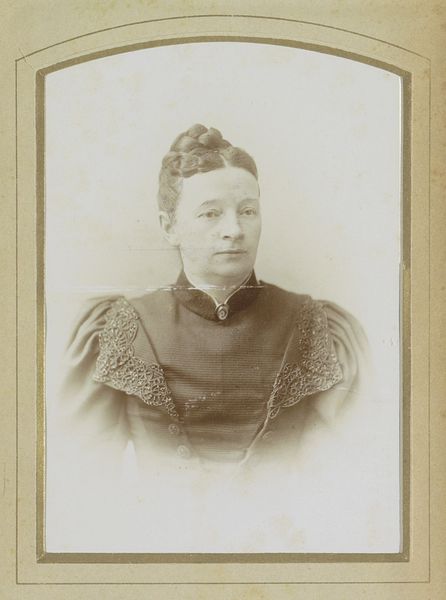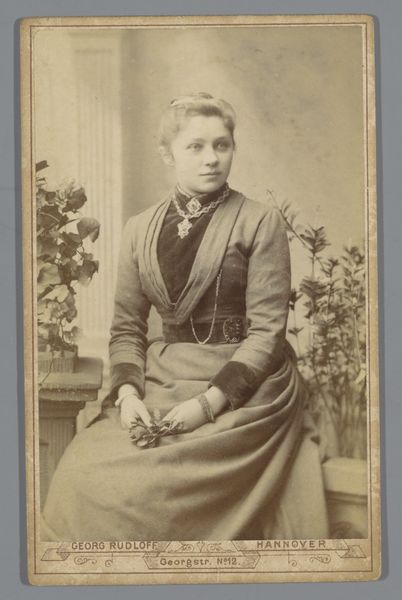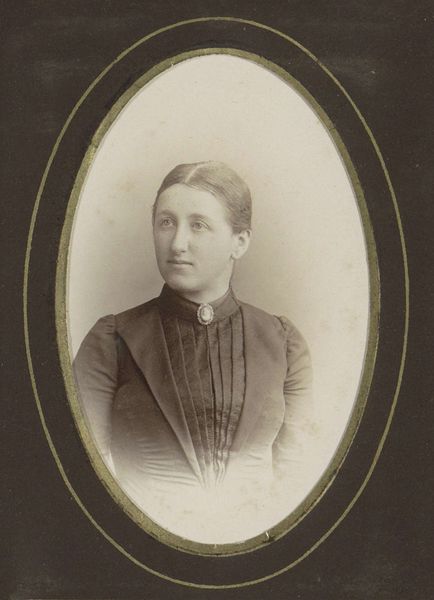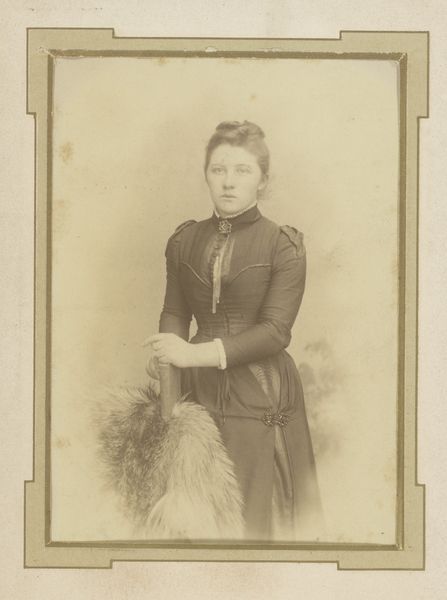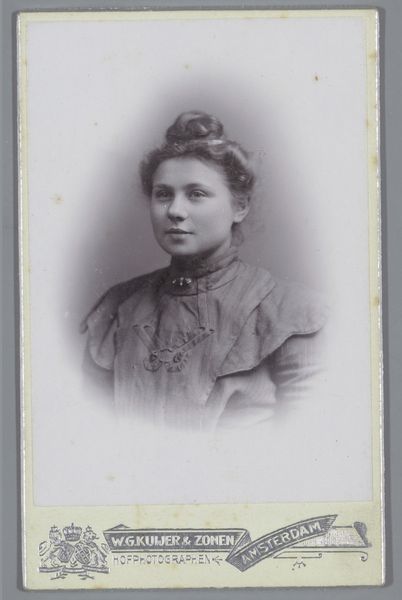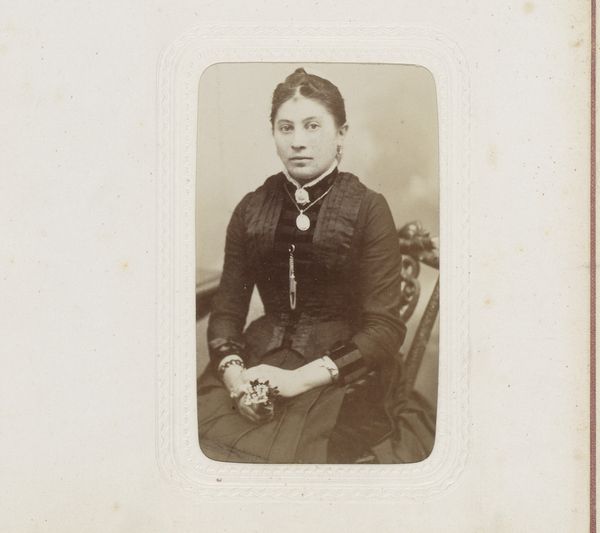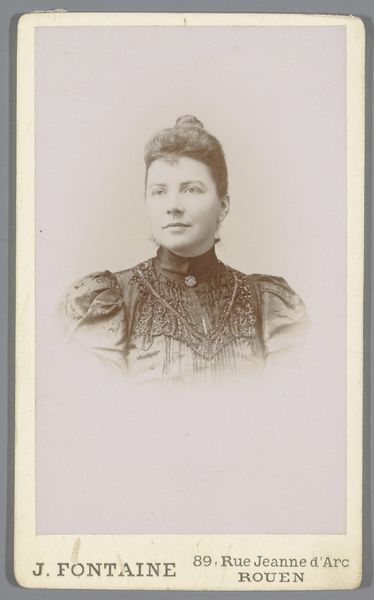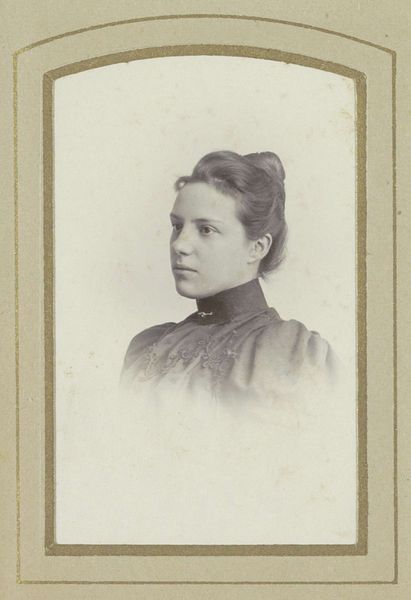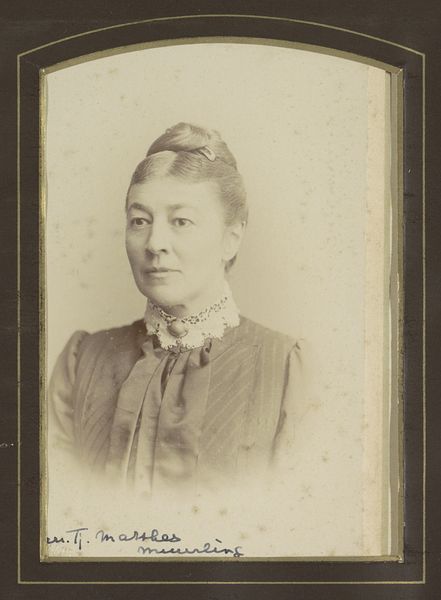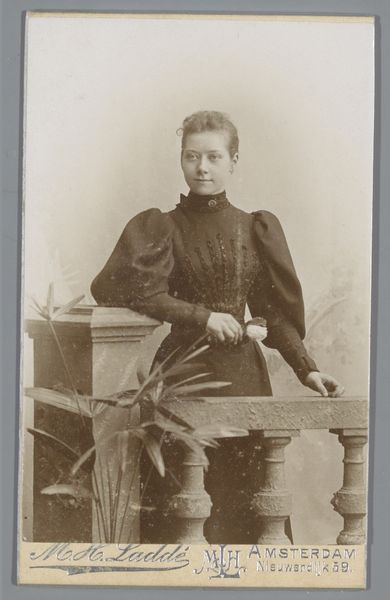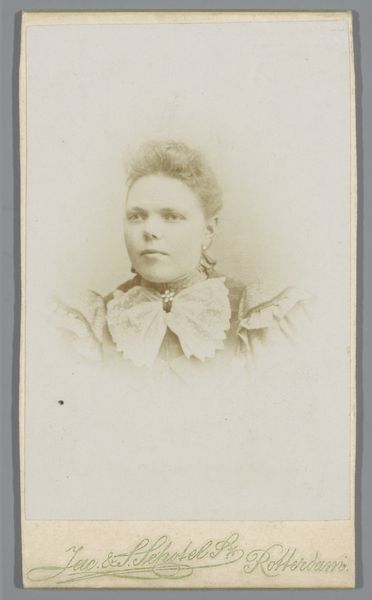
photography, gelatin-silver-print
#
portrait
#
photography
#
historical photography
#
gelatin-silver-print
Dimensions: height 83 mm, width 52 mm
Copyright: Rijks Museum: Open Domain
Curator: What an intriguing piece, this "Portrait of a Woman, Seen Through a Doorway," a gelatin-silver print by Albert Greiner, dating between 1861 and 1890. The Rijksmuseum holds it now, adding to our understanding of the era's visual culture. Editor: The oval framing feels almost like a window looking in. It creates a very intimate, almost voyeuristic experience, doesn't it? There’s a real sense of capturing a private moment. Curator: Indeed. These kinds of photographic portraits were increasingly democratized through the latter part of the 19th century. This portrait presents a formal representation within a constructed environment. Notice the pose and controlled expression—characteristic of portraiture designed for public or familiar consumption. Editor: But that doorway aspect... It disrupts the formality slightly. Is that symbolic, do you think? Is the doorway meant to suggest a transition, a glimpse into another world, or even just a peek behind social facades? Curator: That’s a potent reading. Remember that the burgeoning middle class wanted visual markers of their success and social standing, but at the same time, new photographic techniques were experimented with across Europe and this photo demonstrates an artistic impulse on top of that basic desire for self-representation. Editor: And I suppose the oval mat reinforces the sense of a treasured object. It’s contained, precious. There is also that gold detailing around the oval edges... Curator: It is reminiscent of lockets and brooches from the time and reinforces it as an object of private veneration in the wake of mourning rituals becoming more commonplace and photographic portraiture more accessible than painting. These were technologies intertwined. Editor: Ultimately, what strikes me is the mystery that this photo evokes. I'm curious about her inner world and story through that single, framed glimpse, rather than anything explicitly expressed. Curator: I concur; that subtle air of the unsaid might be one of the more compelling enduring legacies of this image; considering its production within the broader social dynamics allows us further insights. Editor: Seeing the picture and the historical context in tandem certainly helps you piece together what you're looking at. Thank you!
Comments
No comments
Be the first to comment and join the conversation on the ultimate creative platform.
